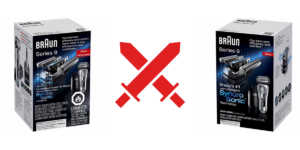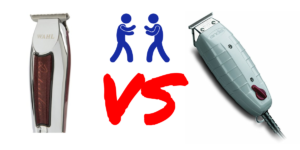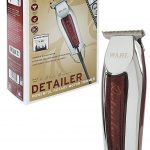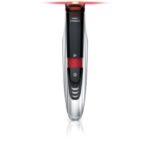Trimming Your Beard the Right Way
No matter what stage of growth your beard is in, trimming your beard is an important part of overall beard grooming. Exactly how do you trim your beard, though, and why? Read on for some tips about trimming your beard.
Why Should I Trim My Beard?
Even if your end goal is to grow your beard out full and lush, trimming your beard is still an important step. By cutting the ends off your growing beard, you encourage fresh, healthy growth of the hair. Trimming the beard also keeps it looking and feeling soft by cutting away “dead ends” of hair. The result is a sleek, healthy and full beard. If you are just starting to grow out your beard, however, it may be best to just let it grow and “take hold” for about a month before trimming it.
Electric Clippers or Manual Approach?
Usually the best approach to trimming your beard is to use both an electric trimmer and a manual method, such as scissors, to do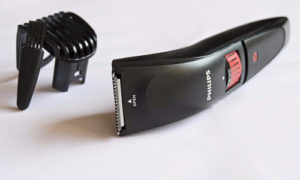 the fine details missed by the electric shaver. An electric trimmer is easy to use, relatively error-proof, and the least likely to cause skin issues such as ingrown hairs. Some men do prefer to get a professional barber to trim their beard, though, and if you don’t feel confident in your ability to trim evenly, this is not a bad idea at all. Electric clippers, shavers and trimmers, however, come with blades that can be chosen to give you an even trim at the length you want. No mess, no fuss; this is usually the best method for trimming your beard. Some do prefer the old school way, and with a steady hand and a very sharp pair of scissors, they can sculpt and trim their beard manually. There really is no right or wrong answer; it is all in how confident you feel after trying both methods.
the fine details missed by the electric shaver. An electric trimmer is easy to use, relatively error-proof, and the least likely to cause skin issues such as ingrown hairs. Some men do prefer to get a professional barber to trim their beard, though, and if you don’t feel confident in your ability to trim evenly, this is not a bad idea at all. Electric clippers, shavers and trimmers, however, come with blades that can be chosen to give you an even trim at the length you want. No mess, no fuss; this is usually the best method for trimming your beard. Some do prefer the old school way, and with a steady hand and a very sharp pair of scissors, they can sculpt and trim their beard manually. There really is no right or wrong answer; it is all in how confident you feel after trying both methods.
Set Up Your Beard Correctly for the Trim
Gather all of your equipment together before you start. This includes your trimmer, a pair of smaller, very sharp grooming scissors and a nasal hair trimmer for the details, a beard comb, and some beard oil for application after the trim. It is important for your beard to be dry before starting the process, because wet hair seems longer; your beard will be shorter than you desired when the hair dries.
1. Comb your beard: Comb through your beard normally a few times to be sure it is tangle free, then comb “up” or against the  pattern of growth to set it up for the trim.
pattern of growth to set it up for the trim.
2. Start your trim: Manually, use your comb to pull the hair and keep it taught. Trim just even with the teeth in the comb. For electric trimmers, read the packaging to choose your blade length. Generally, the numbers (or grade) indicate the length in millimeters of the hair after you trim.
3. Define your neckline: It is a general rule of thumb to keep your beard defined above the level of the Adam ’s apple or higher to present a smooth, trimmed appearance. To keep your beard sleek, you can shorten the length of the trim as you go outward from your face to keep a smooth, well-trimmed appearance but still allow your beard to be full and healthy. Most electric shavers will have blades or settings to achieve this look.
4. Details: With a sharp, small pair of scissors look for individual hairs that may have been missed, and trim around your ears, mouth, or anywhere you may not have been able to get a close trim. You will find your nasal hair trimmer can be a handy tool for this purpose as well.
5. After care: Apply your beard balm and vitamin oils immediately after the trim to keep your hair shiny and healthy.
Remember, many men do choose to go to a barber for at least the first trim. This may be a great way to see the patterns in trimming he uses, and to discuss the blade lengths and methods used by a professional so that next time, you can achieve the same look at home.
Trimming your beard may seem a daunting task, but in reality, it is very simple to do with the right tools and the results are an amazing, well grown, healthy beard.


